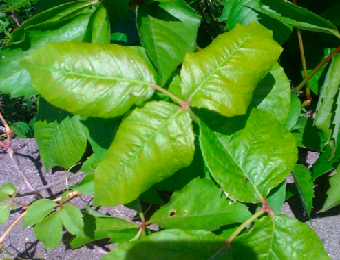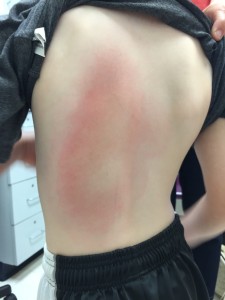We have an updated version of this post with some recipes as well. Please read it here.
Link added 8/2019
“You just don’t appreciate a picky eater until you have one, ” overheard at Dr. Lai’s dinner table.
Picky eaters come in 2 major varieties. One kind is the child who eats the same foods every day and will not vary her diet; for example, cereal, milk, and a banana for breakfast, peanut butter and jelly with milk or juice for lunch, and chicken, rice, and peas for dinner. This diet is nutritionally complete (has fruit, vegetable, protein, dairy, carbohydrate) but is quite “boring” to the parent.
The other kind of picky eater is the child who either leaves out entire food groups, most commonly vegetables or meat, or leaves out meals, such as always eats breakfast but never eats dinner.
My own children range from the One Who Tries Anything to the One Who Refuses Everything (these are my twins!). My oldest child lived on cheerios and peanut butter and jelly for about two years and now eats crab legs and bulgur wheat and other various foods. My point: I know where you’re coming from, I feel your frustration, and I will give you advice that works as well as optimism and a new way of thinking about feeding your children.
Fortunately, from a medical point of view, toddler/child nutrition needs to be complete as you look over several days, not just one meal. For example, if every 3 days your child has eaten some fruit, some vegetables, some protein, some dairy, and some complex carbohydrates, then nutritional needs are met and your child will thrive!
Twelve ways to outwit, outplay, and outlast picky eaters
1) Never let them know you care about what they eat. If you struggle with your child about eating, she will not eat and you will continue to feel bad about her not eating. Talk about the day, not about the food on the table. You want your child to eat for the simple reason that she feels hungry, not to please you or anyone else, and not because she feels glad or mad or sad or because of what you the parent will feel if she eats or doesn’t eat. Along these lines, NEVER cook a “special meal” for your toddler. I can guarantee that when they know how desperately you want them to eat your cooking, they will refuse it.
2) Let them help cook. Even young children can wash vegetables and fruit, arrange food on platters, and mix, pour, and sprinkle ingredients. Older kids can read recipes out loud for you and measure ingredients. Kids are more apt to taste what they help create.
3) Let them dip their food into salad dressing, apple sauce, ketchup etc., which can make their food more appealing or interesting to eat.
4) Let them pick their own food. Whether you grow your own foods, visit a farm or just let your kids help you in the supermarket, kids often get a kick out of tasting what they pick.
5) Hide more nutritious food in the foods they already like (without them knowing). For example, carefully mix vegetables into meatballs or meatloaf or into macaroni and cheese. Let me know if you want my recipe for zucchini chocolate chip muffins or Magic Soup.
6) Offer them foods that you don’t like—THEY might like it. Here’s an example: my children were decorating Easter eggs with Dr. Lai’s children. My kids asked if they could eat their decorated hard boiled eggs. Now, hard boiled eggs are one of the few foods that I do NOT like. I don’t like their smell, their texture, and I really don’t like the way they taste. Yet, all three of my kids, including my pickiest, loved those hard boiled eggs dipped in a little bit of salt. Go figure. Now I have an inexpensive, easy, healthy protein source to offer even though I can’t stand the way my kitchen smells when I cook them… but hey, if my kids actually will EAT them…
7)8) Hunger is the best sauce. Do not offer junk food as snacks. Pretzels, crackers, cookies, candy, and chips have NO nutritional value yet fill up small bellies quickly. Do not waste precious stomach space with junk because your insightful child will HOLD OUT for the junk and refuse good nutrition if they know they can fill up on snacks later. Along these lines, never bribe food for food. Chances are, if you bribe eating vegetables with dessert, all the focus will be on the dessert and a tantrum will follow. You and your child will have belly aches from stress, not full bellies
9) It is okay to repeat similar meals day after day as long as they are nutritious. We might like variety as grownups but most toddlers and young kids prefer sameness and predictability.
10) Turn off the TV. Trust me and trust numerous scientific behavioral studies on this, while it sometimes works in the short term, it never works in the long term. In addition, watching TV during meals is antisocial and promotes obesity.
11) Do not become a “short order” chef. If you do, your child will take advantage of you. Also see rule #8. When your child says, I don’t want this dinner/lunch/breakfast, I want something else,” you say “The meal is on the table.” One variation of this that works in some families is to have one back up meal that is the same every day and for every meal and must be completely non-cook and nutritious, for example, a very low sugar cereal and milk, peanut butter and jelly sandwich, etc, that you agree to serve if your child does not want to eat what the rest of the family is eating.
12) You can give your child a pediatric multivitamin. This tactic is not “giving up” nor is it cheating, and it can give the Parent as Provider of Nutrients peace of mind. You can either give a multivitamin every day or just on the days that you are convinced that your child has eaten nothing.
And if all else fails, just remember someday, your child will probably become a parent of a picky eater too, and she will consult ask you how to cope. You’ll be able to tell her what worked for you when she was a picky eater.
Julie Kardos, MD and Naline Lai, MD
©2009 Two Peds in a Pod®
 Recently we’ve had a parade of itchy children troop through our office. The culprit: poison ivy.
Recently we’ve had a parade of itchy children troop through our office. The culprit: poison ivy.